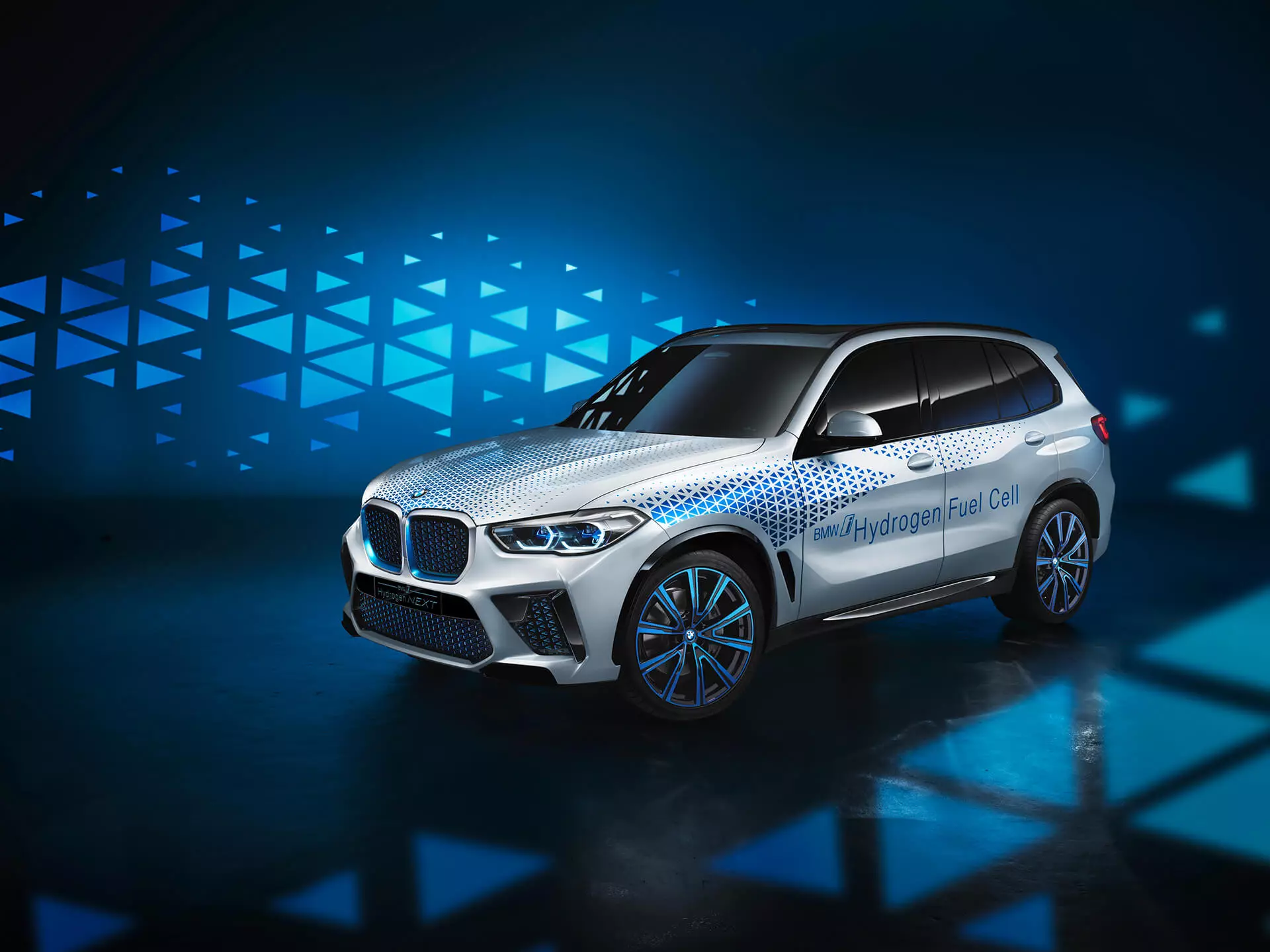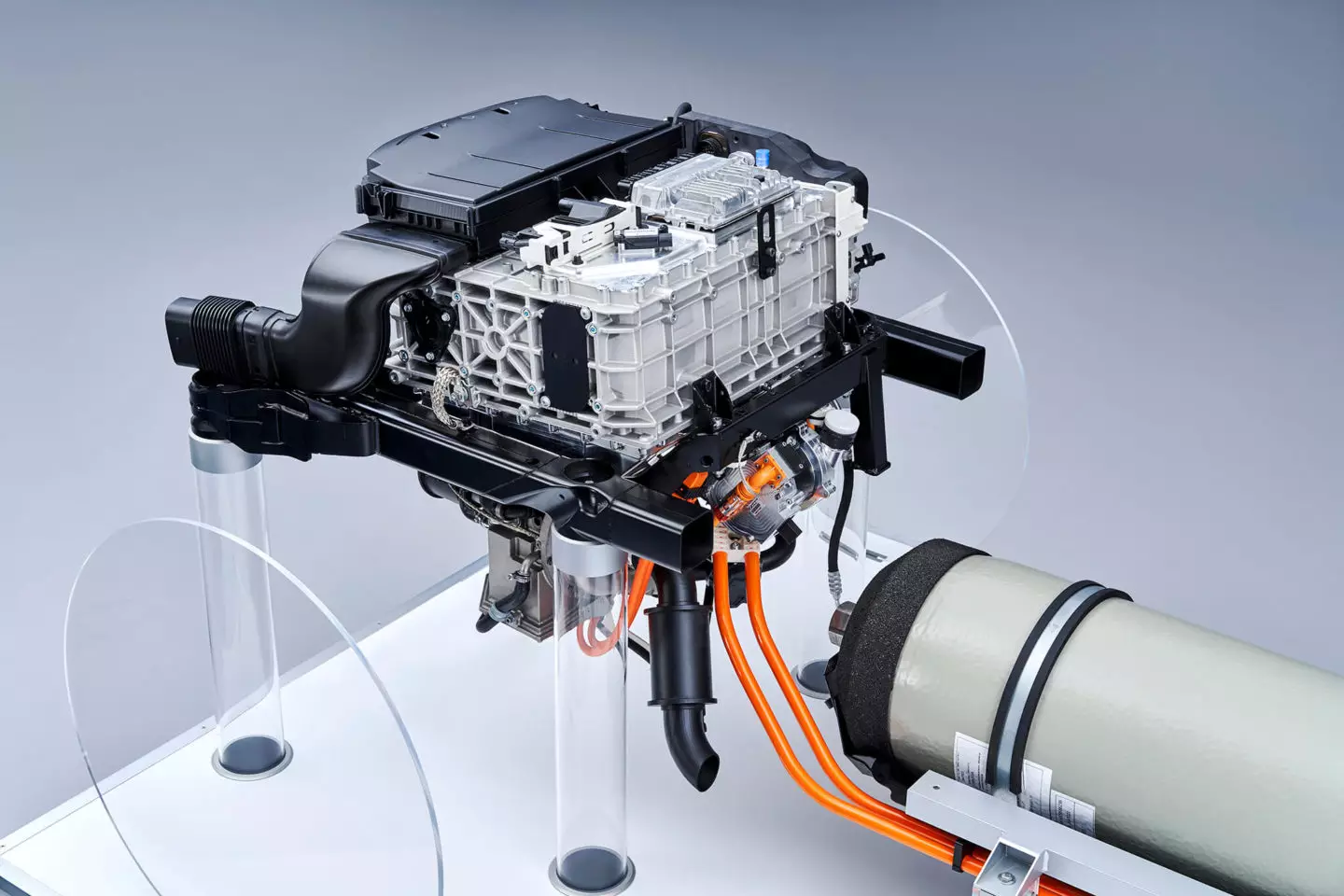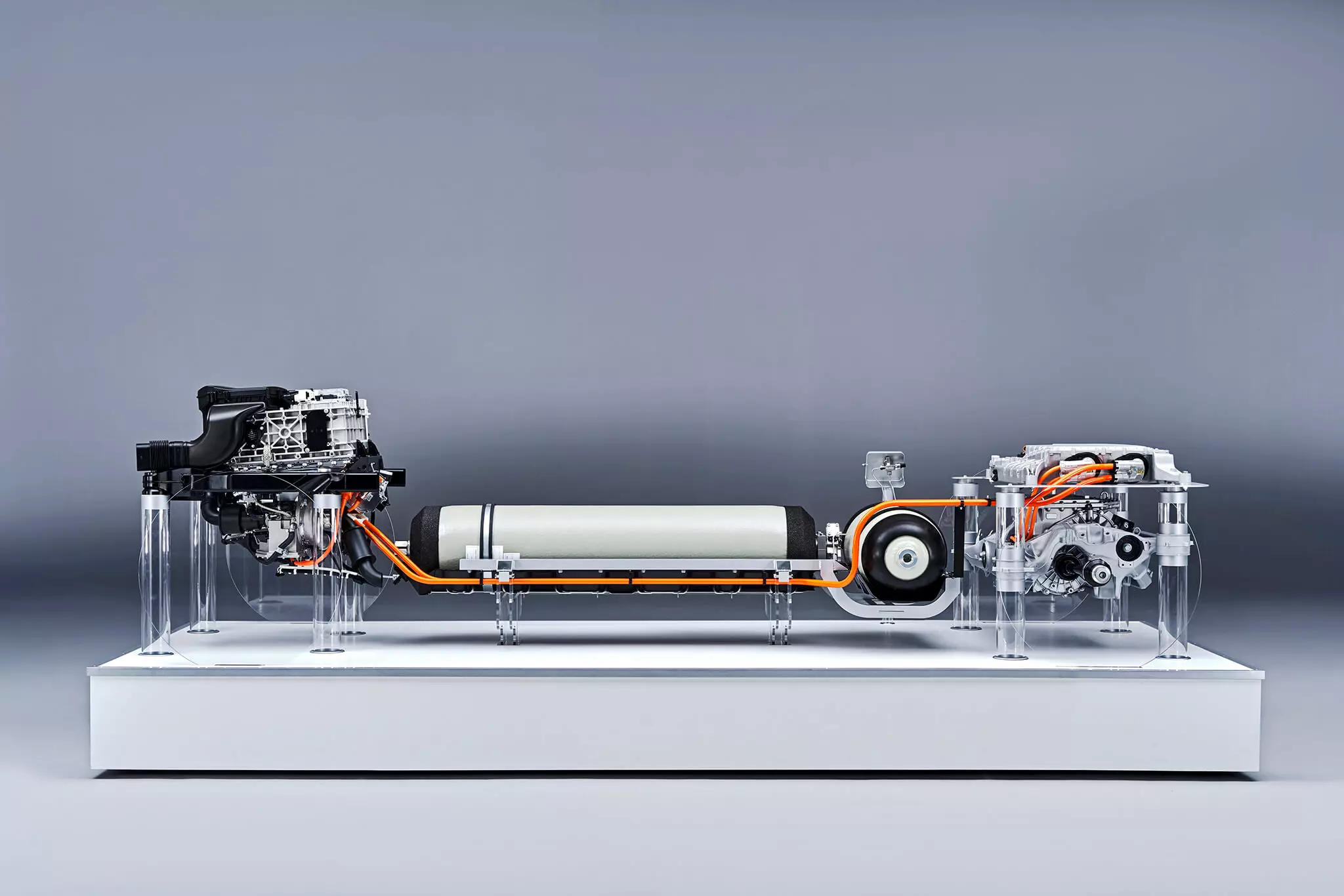THE BMW i Hydrogen NEXT , or what will be, in essence, an X5 with a hydrogen fuel cell, will hit the market on a limited basis in 2022 — BMW says it will have a “regular” production model in the second half of the decade.
Although we are still two years away, BMW has already revealed some technical details on what to expect from its return to hydrogen. In the past BMW has explored the possibility of using hydrogen as a fuel in a combustion engine — up to a hundred 7-series V12 engines were made that ran on hydrogen.
In the case of the i Hydrogen NEXT, it does not have a combustion engine, being an electric vehicle (FCEV or Fuel Cell Electric Vehicle), whose energy it needs does not come from a battery, but from the fuel cell. The energy it produces is the result of the chemical reaction between hydrogen (stored) and oxygen present in the atmosphere — from this reaction only water vapor results.

The fuel cell, positioned at the front, generates up to 125 kW, or 170 hp, of electrical energy. Underneath the fuel cell system is the electric converter, which adapts the voltage to both the electric machine and the battery… Battery? Yes, despite having a hydrogen fuel cell, the i Hydrogen NEXT will also have a battery.
This is part of the 5th generation of the eDrive (electric machine) unit, debuting on the new BMW iX3, the 100% electric (battery-powered) version of the well-known German SUV. The function of this battery, positioned above the electric motor (on the rear axle) is to allow power peaks to make overtaking or more intense accelerations.

The hydrogen fuel cell system generates up to 125 kW (170 hp). The electrical converter is located under the system.
In total, this entire set produces 275 kW, or 374 hp . And from what you can see from the images revealed, and like the iX3, the i Hydrogen NEXT will also have only two drive wheels, in this case, rear-wheel drive.
The battery will be powered not only by the regenerative braking system but also by the fuel cell system itself. The fuel cell, on the other hand, takes the hydrogen it needs from two tanks capable of storing a total of 6 kg of hydrogen at a pressure of 700 bar — as in other hydrogen fuel cell vehicles, refueling takes no more than 3-4 minutes.
Partnership with Toyota
The same partnership that gave us the Z4 and the Supra is also what is behind BMW's entry into hydrogen fuel cell vehicles with the i Hydrogen NEXT.

Established in 2013, with regard to powertrains based on fuel cells, the partnership between BMW and Toyota (which already markets the Mirai, its hydrogen fuel cell model) seeks to develop modular and scalable components for this type of vehicles. They are also looking to develop and industrialize fuel cell technology for mass production.
